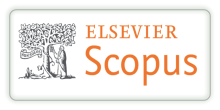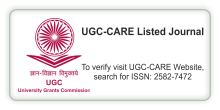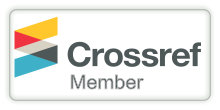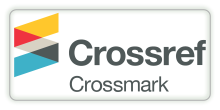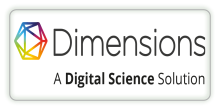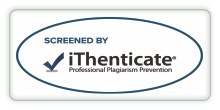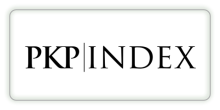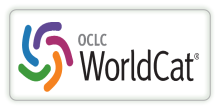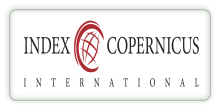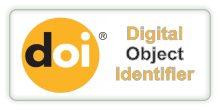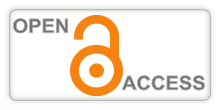A STUDY OF THE RELATIONSHIP BETWEEN EMPLOYEE ENGAGEMENT AND EMPLOYEE WELL-BEING IN IT MNCS
DOI:
https://doi.org/10.29121/shodhkosh.v5.i3.2024.4575Keywords:
Employee engagement, employee well-being, IT industry, Multi-national Corporation (MNC), organizational culture, leadership, work-life balance. Agility, WHO-5 Well-being Index, Utrecht Work Engagement Survey (UWES)Abstract [English]
The present research study explores the strategic relation between employee engagement and employee well-being in the Information Technology (IT) Multi-National Corporations (MNCs) (GOMATHY, 2022). IT MNCs are well-known for the high-intensity work settings, prolonged work hours, and rapid technological upgradation and advancements (Bakker & Demerouti, 2017a). This is an attempt to understand how engagement influences well-being which is critical for MNCs specifically in Information Technology (IT) Industry struggling to elevate performance and productivity, improve retention, and nurture a cohesive, supportive, and healthy work culture (Bakker et al., 2012). The study synthesizes existing literature, presents case studies from global IT companies, and offers recommendations for improving both engagement and well-being. The findings suggest a positive correlation between employee engagement and well-being, with leadership, work-life balance, and organizational culture being key mediators in this relationship.
In summary, The study examines the co-relation between employee engagement strategies and Employee well-being practices in the IT MNCs to underscore culture, leadership and work-life balance as crucial aspects as an organizational driver for retention, progress, performance, and productivity (Poelmans et al., 2008).
References
Adrian Putra Ariussanto, K., Jiwa Husada Tarigan, Z., Br Sitepu, R., & Kumar Singh, S. (2020). Leadership Style, Employee Engagement, and Work Environment to Employee Performance in Manufacturing Companies. SHS Web of Conferences, 76, 01020. https://doi.org/10.1051/SHSCONF/20207601020 DOI: https://doi.org/10.1051/shsconf/20207601020
Alarcon, G. M., & Edwards, J. M. (2011). The relationship of engagement, job satisfaction and turnover intentions. Stress and Health, 27(3). https://doi.org/10.1002/SMI.1365 DOI: https://doi.org/10.1002/smi.1365
Annamarie Mann. (2018, January 15). Why We Need Best Friends at Work. Workplace. https://www.gallup.com/workplace/236213/business-case-employee-engagement-infographic.aspx
Attridge, M. (2009). Measuring and managing employee work engagement: A review of the research and business literature. Journal of Workplace Behavioral Health, 24(4), 383–398. https://doi.org/10.1080/15555240903188398 DOI: https://doi.org/10.1080/15555240903188398
Bakker, A. B., & Demerouti, E. (2017a). Job demands-resources theory: Taking stock and looking forward. Journal of Occupational Health Psychology, 22(3), 273–285. https://doi.org/10.1037/OCP0000056
Bakker, A. B., & Demerouti, E. (2017b). Job demands-resources theory: Taking stock and looking forward. Journal of Occupational Health Psychology, 22(3), 273–285. https://doi.org/10.1037/OCP0000056 DOI: https://doi.org/10.1037/ocp0000056
Bakker, A. B., Demerouti, E., & Ten Brummelhuis, L. L. (2012). Work engagement, performance, and active learning: The role of conscientiousness. Journal of Vocational Behavior, 80(2), 555–564. https://doi.org/10.1016/J.JVB.2011.08.008 DOI: https://doi.org/10.1016/j.jvb.2011.08.008
Biswas-Diener, R., Kashdan, T. B., & Lyubchik, N. (2016). Psychological Strengths at Work. The Wiley Blackwell Handbook of the Psychology of Positivity and Strengths-Based Approaches at Work, 34–47. https://doi.org/10.1002/9781118977620.CH3 DOI: https://doi.org/10.1002/9781118977620.ch3
Burbano, V. C. (2016). Social responsibility messages and worker wage requirements: Field experimental evidence from online labor marketplaces. Organization Science, 27(4), 1010–1028. https://doi.org/10.1287/ORSC.2016.1066 DOI: https://doi.org/10.1287/orsc.2016.1066
Burke, R. J., Fiksenbaum, L., Koyuncu, M., & Jing, W. (2009). Work engagement among hotel managers in Beijing, China: potential antecedents and consequences. Tourism Review, 64(3), 4–18. https://doi.org/10.1108/16605370910988791/FULL/HTML DOI: https://doi.org/10.1108/16605370910988791
DeShon, R. P., Kozlowski, S. W. J., Schmidt, A. M., Milner, K. R., & Wiechmann, D. (2004). A multiple-goal, multilevel model of feedback effects on the regulation of individual and team performance. Journal of Applied Psychology, 89(6), 1035–1056. https://doi.org/10.1037/0021-9010.89.6.1035 DOI: https://doi.org/10.1037/0021-9010.89.6.1035
Ellis Ryann. (2021, December 3). A Holistic Look at Organization and Employee Well-Being. Association for Talent Development. https://www.td.org/content/atd-blog/a-holistic-look-at-organization-and-employee-well-being
Gallup. (2021). Build an Exit Program That Improves Retention and Creates Positive Exit Experiences. Gallup Workplace. https://www.gallup.com/workplace/246512/exit-perspective-paper.aspx
Gallup. (2023). State of the global workplace: 2023 Report. Gallup, Inc., 1–95. https://www.gallup.com/workplace/349484/state-of-the-global-workplace.aspx
Gallup Workspace. (2020). How to Improve Employee Engagement in the Workplace - Gallup. Gallup Workplace. https://www.gallup.com/workplace/285674/improve-employee-engagement-workplace.aspx
Glavas, A. (2014). Employee Engagement and Sustainability: A Model for Implementing Meaningfulness at and in Work. Journal of Corporate Citizenship, 2012(46), 13–29. https://doi.org/10.9774/GLEAF.4700.2012.SU.00003 DOI: https://doi.org/10.9774/GLEAF.4700.2012.su.00003
GOMATHY, D. C. K. (2022). Employee Engagement Strategies in Information Technology Companies. Interantional Journal of Scientific Research in Engineering and Management, 06(03). https://doi.org/10.55041/ijsrem11782 DOI: https://doi.org/10.55041/IJSREM11782
Grande, D. E. (2021). Hero Model: Walking Through the Method and Its Empirical Cases. Journal of Education and Human Resources JEHR, 2(1), 35–45.
Igu, N. C. N., Onyishi, C. N., Amujiri, B. A., Binuomote, M. O., Modebelu, M. N., Okafor, I. P., Awe, B. A., Fausta, M., Obih, S. O., Eke, D. O., Ezemoyin, M. C., Uzoma, B. N., Ugwu, J. I., & Mbon, U. F. (2023). Raising Leadership Self-Efficacy and Minimizing Organizational Burnout Among School Administrators in a GROW Model of Cognitive Behavioral Coaching. Journal of Leadership and Organizational Studies. https://doi.org/10.1177/15480518231171748 DOI: https://doi.org/10.1177/15480518231171748
Janovac, T., S, V. J., Tadić, J., Tomić, G., & Ćufalić, S. (2021). the Influence of Employee Motivation Factors on. 23(1), 224–239. DOI: https://doi.org/10.17512/pjms.2021.23.1.14
Kanungo, D. (2021). How HR Analytics Translate to Employee Engagement and Competitive Advantage. Tata Consultancy Services,. https://www.gallup.com/workplace/324218/millennials-finally-workplace.aspx,
Kim, J., & Jung, H. S. (2022). The Effect of Employee Competency and Organizational Culture on Employees’ Perceived Stress for Better Workplace. International Journal of Environmental Research and Public Health, 19(8), 4428. https://doi.org/10.3390/IJERPH19084428 DOI: https://doi.org/10.3390/ijerph19084428
Kim, W., Khan, G. F., Wood, J., & Mahmood, M. T. (n.d.). Employee Engagement for Sustainable Organizations : Keyword Analysis Using Social Network Analysis and Burst Detection Approach. https://doi.org/10.3390/su8070631 DOI: https://doi.org/10.3390/su8070631
Macey, W. H., & Schneider, B. (2008). The Meaning of Employee Engagement. Industrial and Organizational Psychology, 1(1), 3–30. https://doi.org/10.1111/j.1754-9434.2007.0002.x DOI: https://doi.org/10.1111/j.1754-9434.2007.0002.x
Madhani, P. (2020). (15) (PDF) Effective Rewards and Recognition Strategy: Enhancing Employee Engagement, Customer Retention and Company Performance. Worldwork Journal. https://www.researchgate.net/publication/343628153_Effective_Rewards_and_Recognition_Strategy_Enhancing_Employee_Engagement_Customer_Retention_and_Company_Performance
Madhavan, G., Oakley, B. A., Green, D. (Social entrepreneur), Koon, D., & Low, P. (2020). Practicing sustainability. 244.
Meyers, M. C., Kooij, D., Kroon, B., de Reuver, R., & van Woerkom, M. (2020). Organizational Support for Strengths Use, Work Engagement, and Contextual Performance: The Moderating Role of Age. Applied Research in Quality of Life, 15(2), 485–502. https://doi.org/10.1007/S11482-018-9702-4 DOI: https://doi.org/10.1007/s11482-018-9702-4
Musser, C. (2019). Give Employees the Right Kind of Feedback at the Right Time. Gallup Workplace. https://www.gallup.com/workplace/268937/give-employees-right-kind-feedback-right-time.aspx
Poelmans, S. A. Y., Kalliath, T., & Brough, P. (2008). Achieving work-life balance: Current theoretical and practice issues. Journal of Management and Organization, 14(3), 227–238. https://doi.org/10.5172/JMO.837.14.3.227 DOI: https://doi.org/10.5172/jmo.837.14.3.227
S Ceccacci, M. M. M. P. M. M. (2019). A multipath methodology to promote ergonomics, safety and efficiency in agile factories. International Journal of Agile Systems and Management, 12(4), 407–436. DOI: https://doi.org/10.1504/IJASM.2019.104582
Schaufeli, W. B., Shimazu, A., Hakanen, J., Salanova, M., & De Witte, H. (2019). An ultra-short measure for work engagement: The UWES-3 validation across five countries. European Journal of Psychological Assessment, 35(4), 577–591. https://doi.org/10.1027/1015-5759/A000430 DOI: https://doi.org/10.1027/1015-5759/a000430
Schaufeli, W., & Bakker, A. (n.d.). UWES UTRECHT WORK ENGAGEMENT SCALE Preliminary Manual.
Seligman, M. E., & Csikszentmihalyi, M. (2000). Positive psychology. An introduction. The American Psychologist, 55(1), 5–14. https://doi.org/10.1037/0003-066X.55.1.5 DOI: https://doi.org/10.1037//0003-066X.55.1.5
Shantaram, S. (2020). Key Performance Indicators for Agile Software Development Methodology. September 2020. https://www.researchgate.net/publication/344489915
Sharma, N., Khatri, B., & Attri, A. K. (2021). Impact of Green HRM Practices on Employees’ Behavior in IT Sector. Pacific Business Review International, 13(10), 57–68.
Shettigar, R., & Shankar, S. (2020). Impact of employee engagement on organisational effectivenee: an empirical study. Turkish Journal of Physiotherapy and Rehabilitation, 32(2), 3878–3883. www.turkjphysiotherrehabil.org
Shuck, B., & Reio, T. G. (2014). Employee Engagement and Well-Being: A Moderation Model and Implications for Practice. Journal of Leadership and Organizational Studies, 21(1), 43–58. https://doi.org/10.1177/1548051813494240 DOI: https://doi.org/10.1177/1548051813494240
Singhania, D. M., & Saini, D. N. (2022). Systems approach to environment, social and governance (ESG): Case of Reliance industries. Sustainable Operations and Computers, 3, 103–117. https://doi.org/10.1016/J.SUSOC.2021.11.003 DOI: https://doi.org/10.1016/j.susoc.2021.11.003
Sunil Kumar Suvvari. (2020). The Impact of Agile on Customer Satisfaction and Business Value. Innovative Research Thoughts, 6(5), 199–211. https://doi.org/10.36676/IRT.V6.I5.1413 DOI: https://doi.org/10.36676/irt.v6.i5.1413
Topp, C. W., Østergaard, S. D., Søndergaard, S., & Bech, P. (2015). The WHO-5 Well-Being Index: a systematic review of the literature. Psychotherapy and Psychosomatics, 84(3), 167–176. https://doi.org/10.1159/000376585 DOI: https://doi.org/10.1159/000376585
Vohra, N., Chari, V., Mathur, P., Sudarshan, P., Verma, N., Mathur, N., Thakur, P., Chopra, T., Srivastava, Y., Gupta, S., Dasmahapatra, V., Fonia, S., & Gandhi, H. K. (2015). Inclusive Workplaces: Lessons from Theory and Practice. Vikalpa, 40(3), 324–362. https://doi.org/10.1177/0256090915601515 DOI: https://doi.org/10.1177/0256090915601515
Wiles Jackie. (2019, October 15). What Is Employee Engagement. Gartner. https://www.gartner.com/smarterwithgartner/what-is-employee-engagement
Witters Dan; Agrawal Sangeeta. (2015, October 27). Well-Being Enhances Benefits of Employee Engagement. Gallup. https://www.gallup.com/workplace/236483/enhances-benefits-employee-engagement.aspx
Downloads
Published
How to Cite
Issue
Section
License
Copyright (c) 2024 Abhijit Khurape, Dr. Ganeshkumar G. Gondane

This work is licensed under a Creative Commons Attribution 4.0 International License.
With the licence CC-BY, authors retain the copyright, allowing anyone to download, reuse, re-print, modify, distribute, and/or copy their contribution. The work must be properly attributed to its author.
It is not necessary to ask for further permission from the author or journal board.
This journal provides immediate open access to its content on the principle that making research freely available to the public supports a greater global exchange of knowledge.





